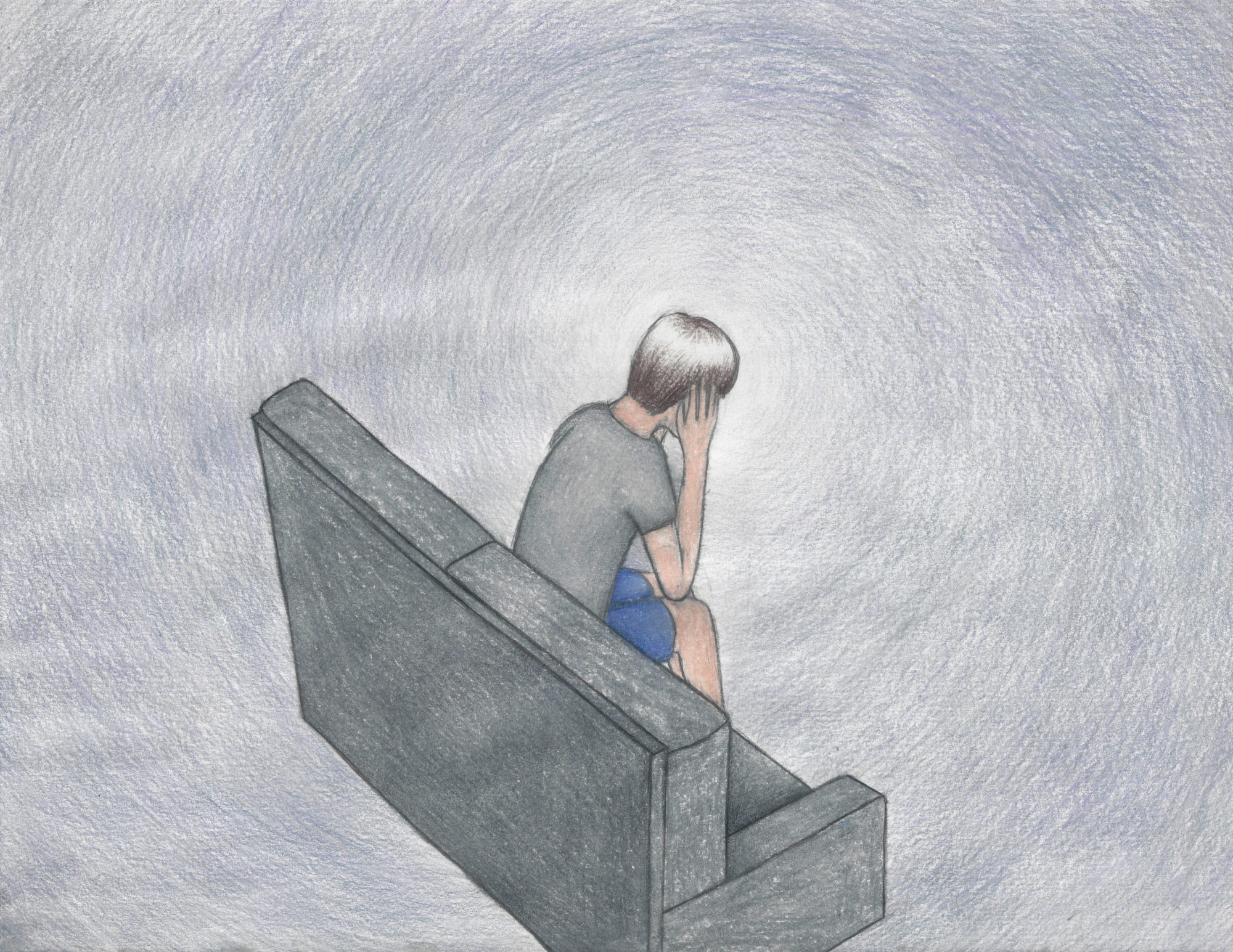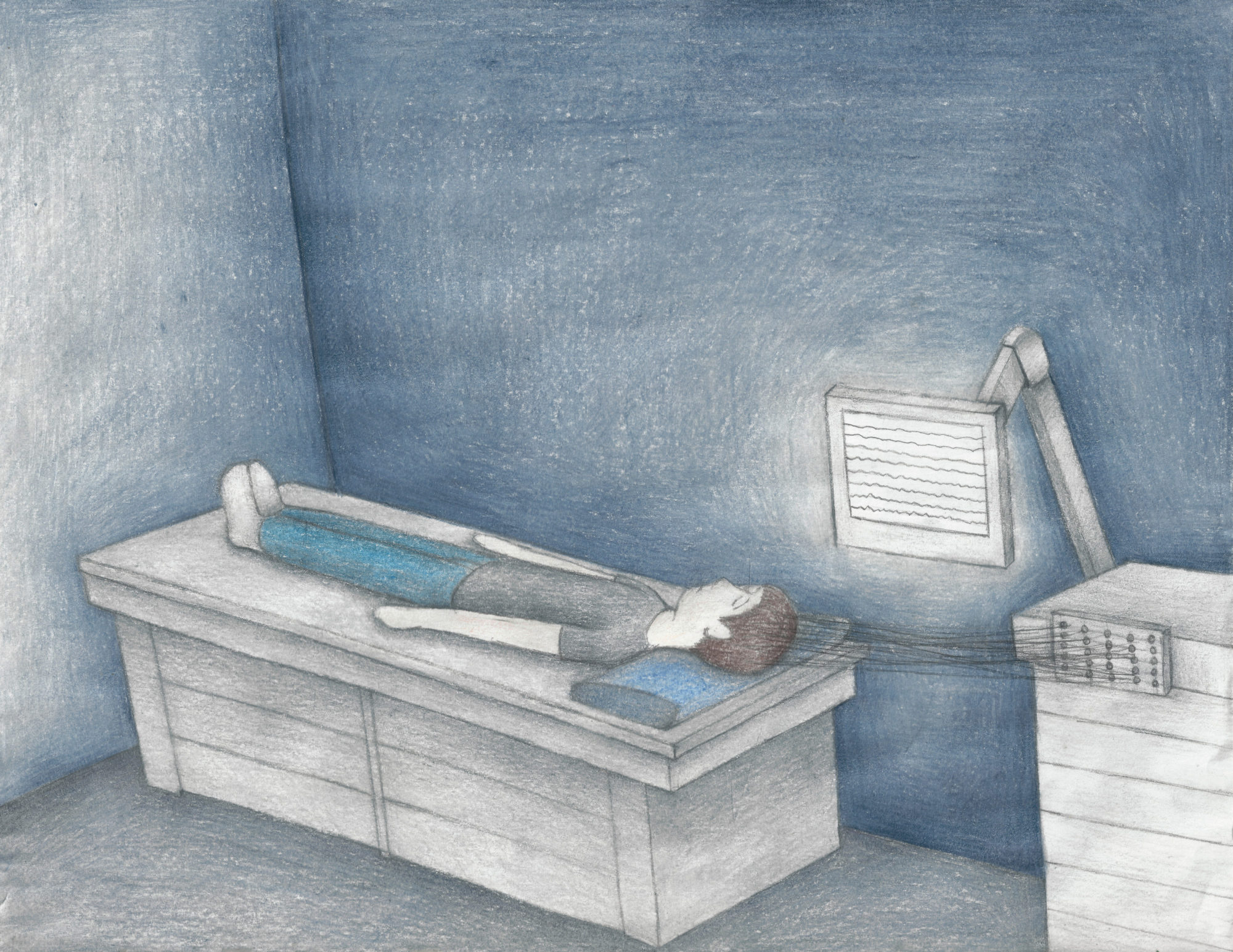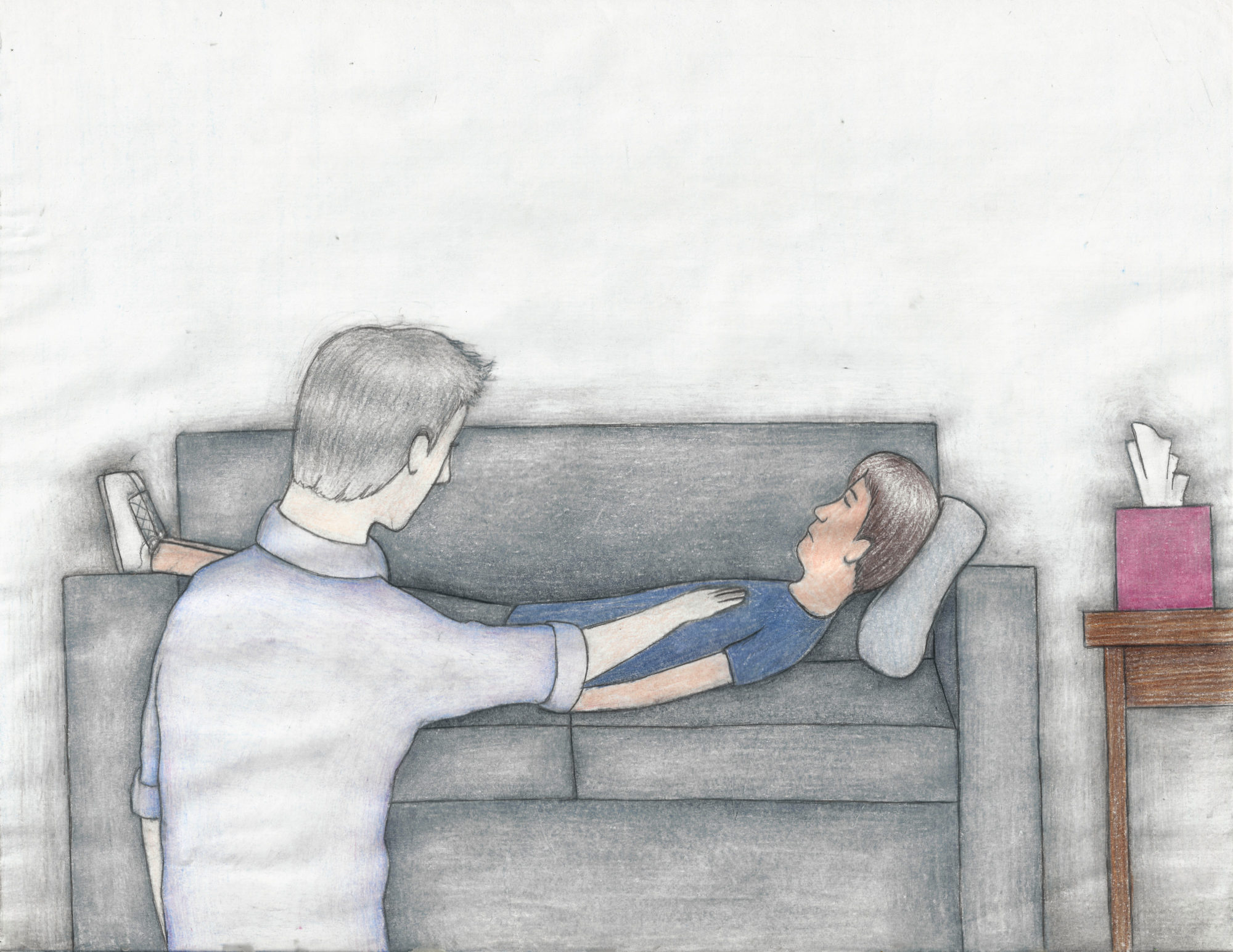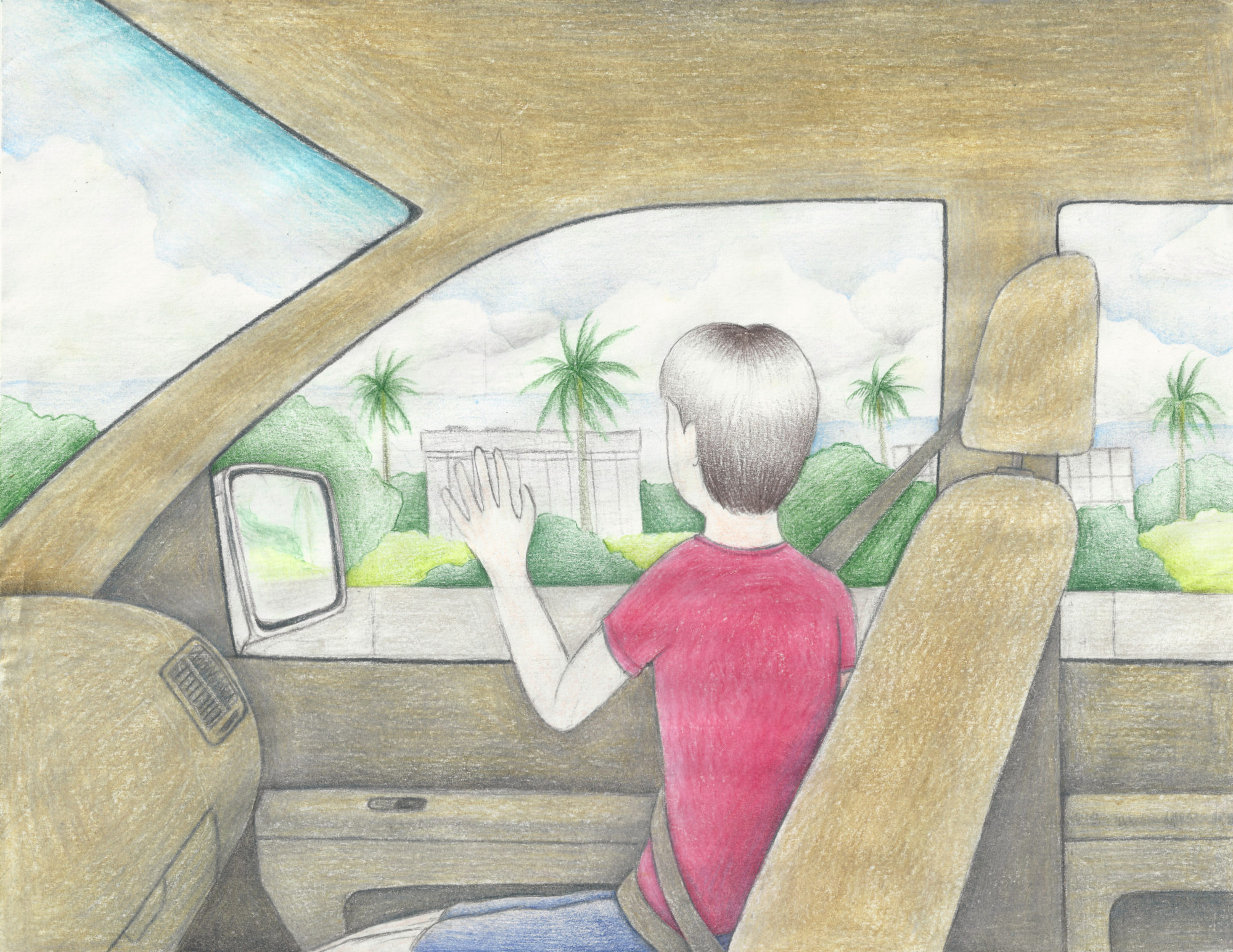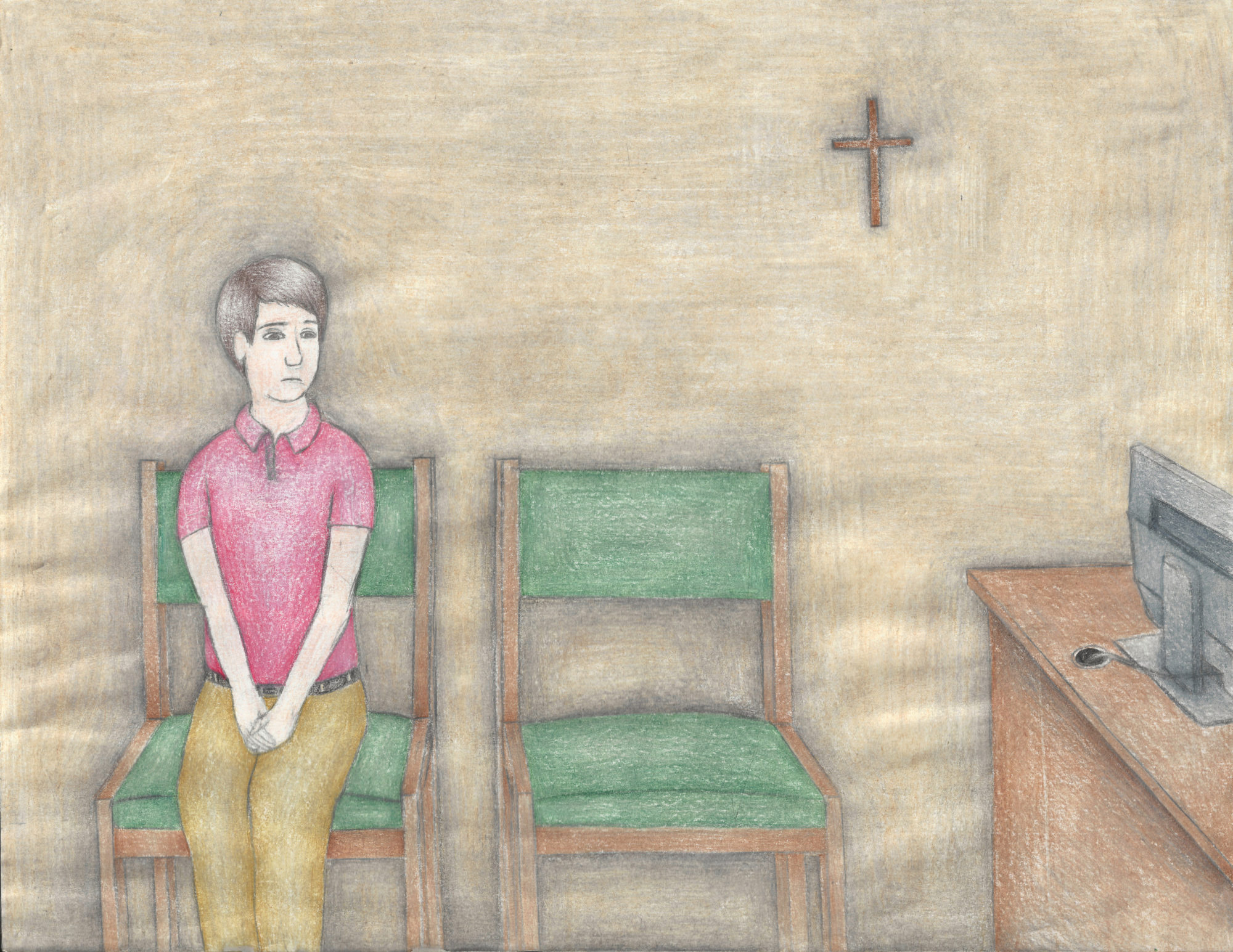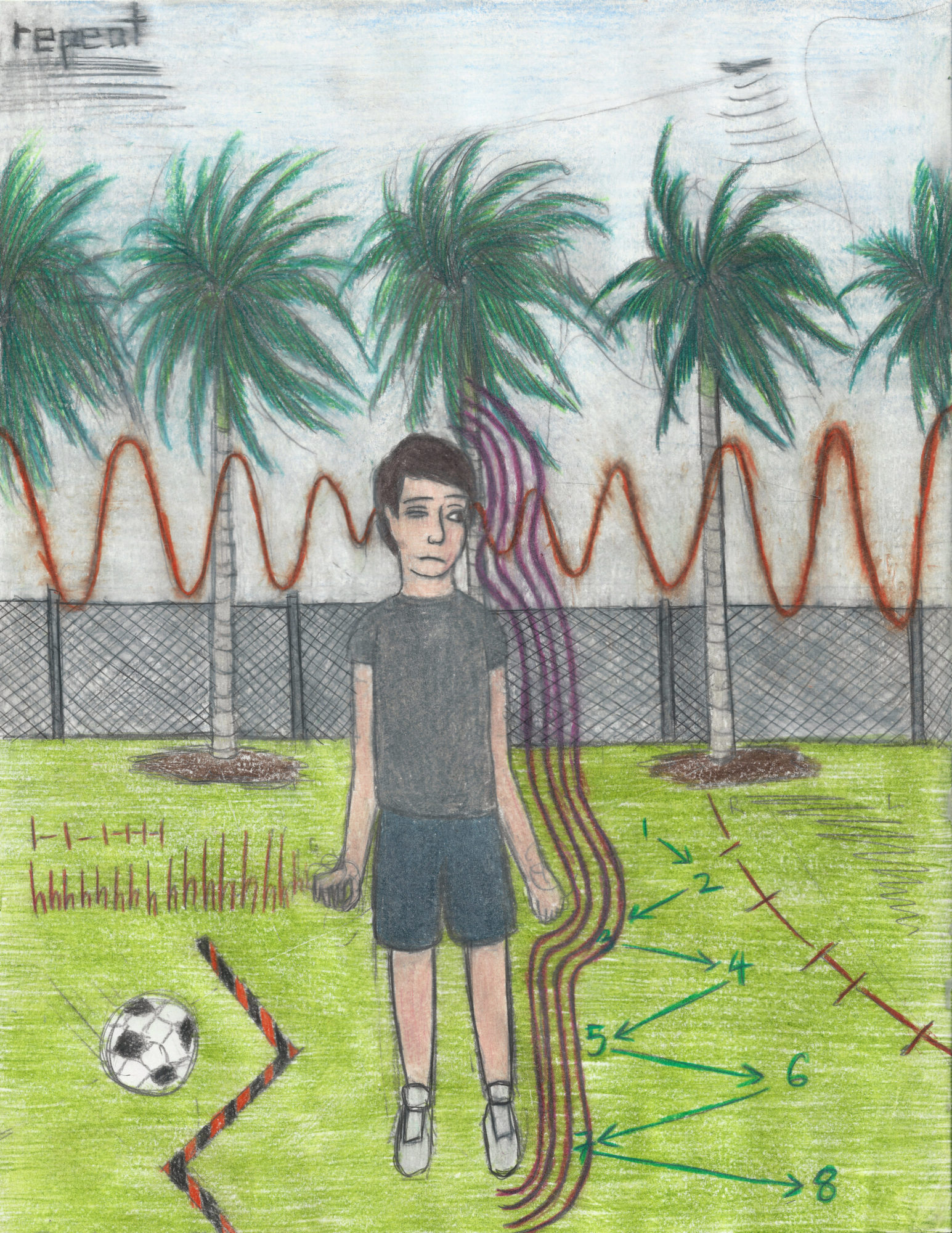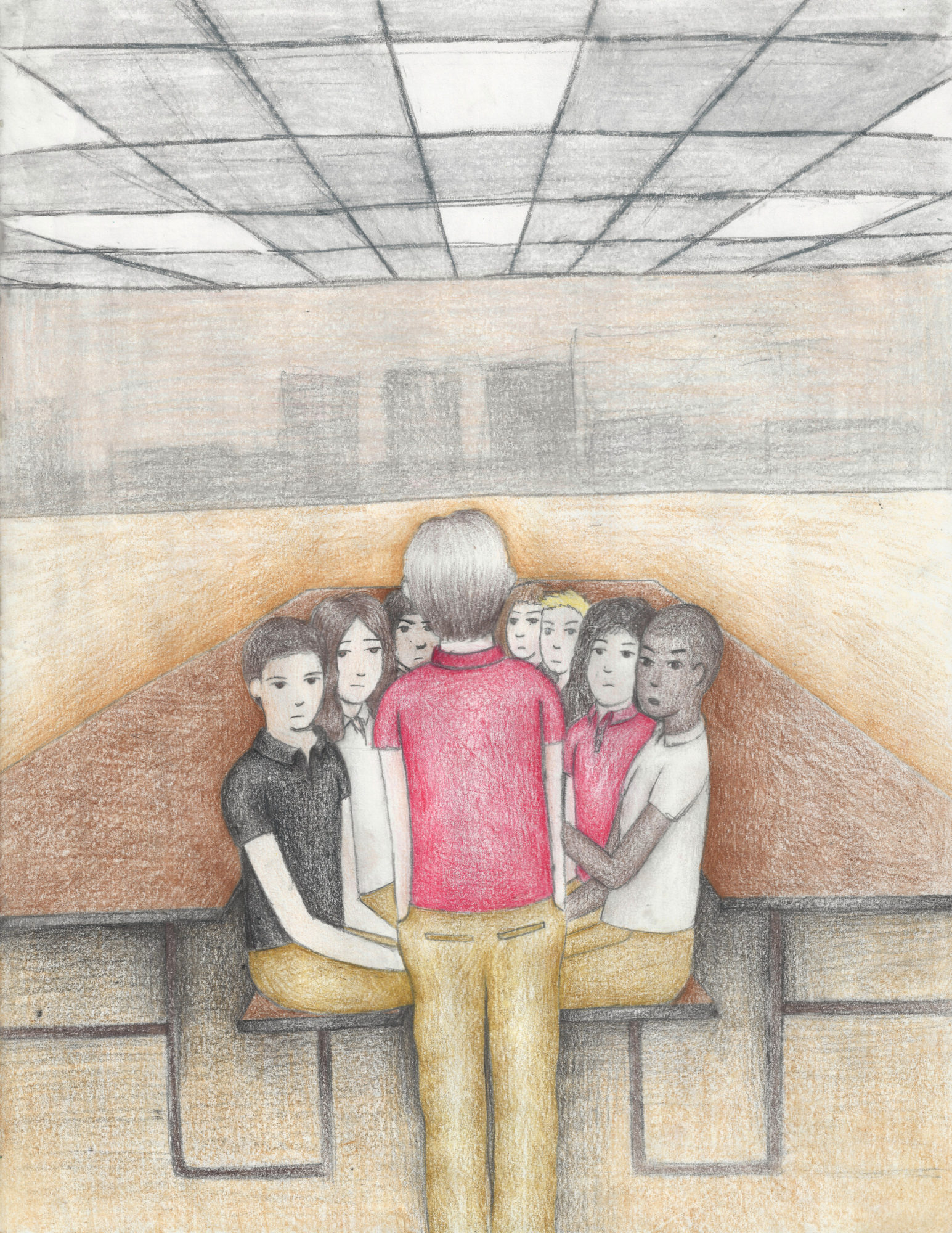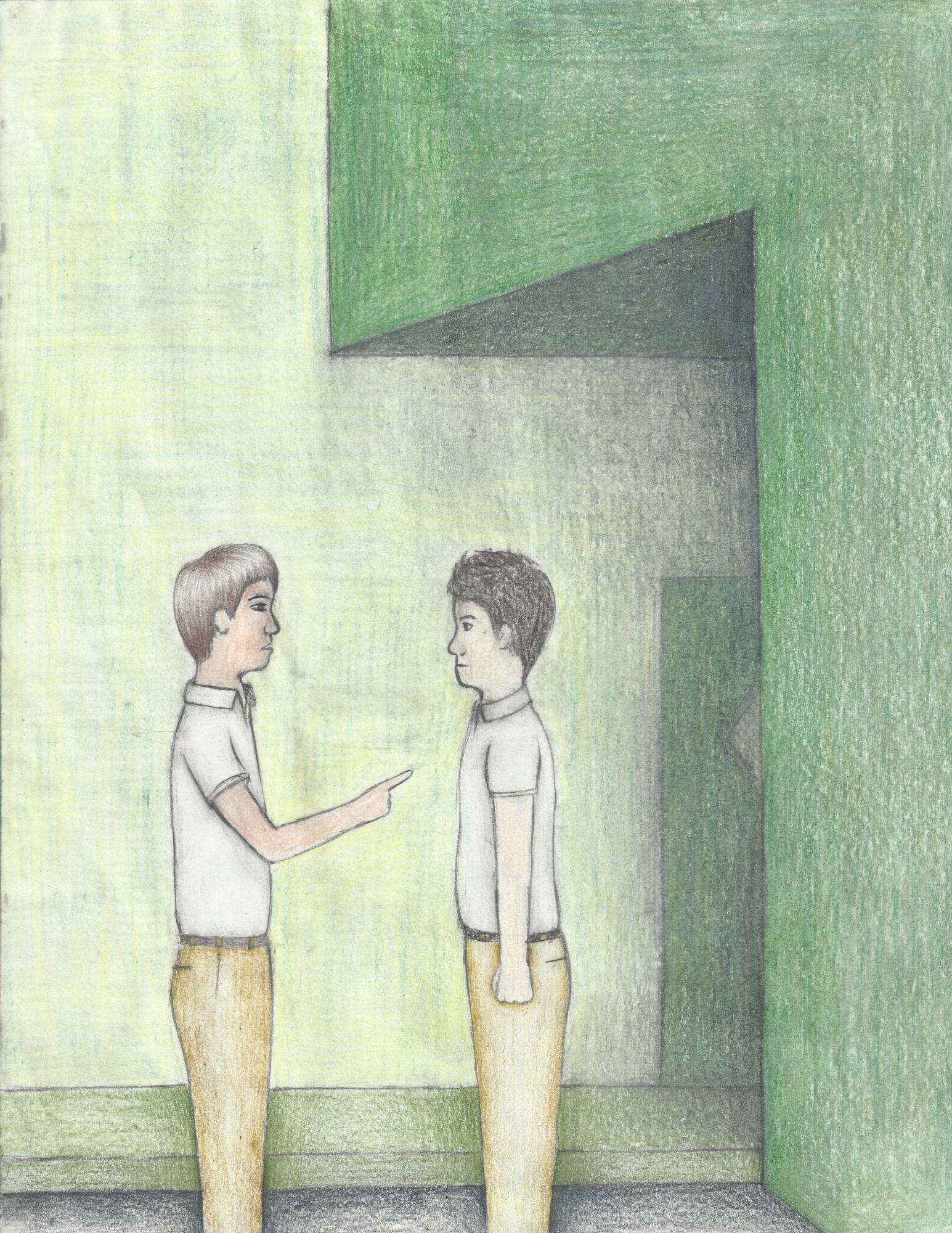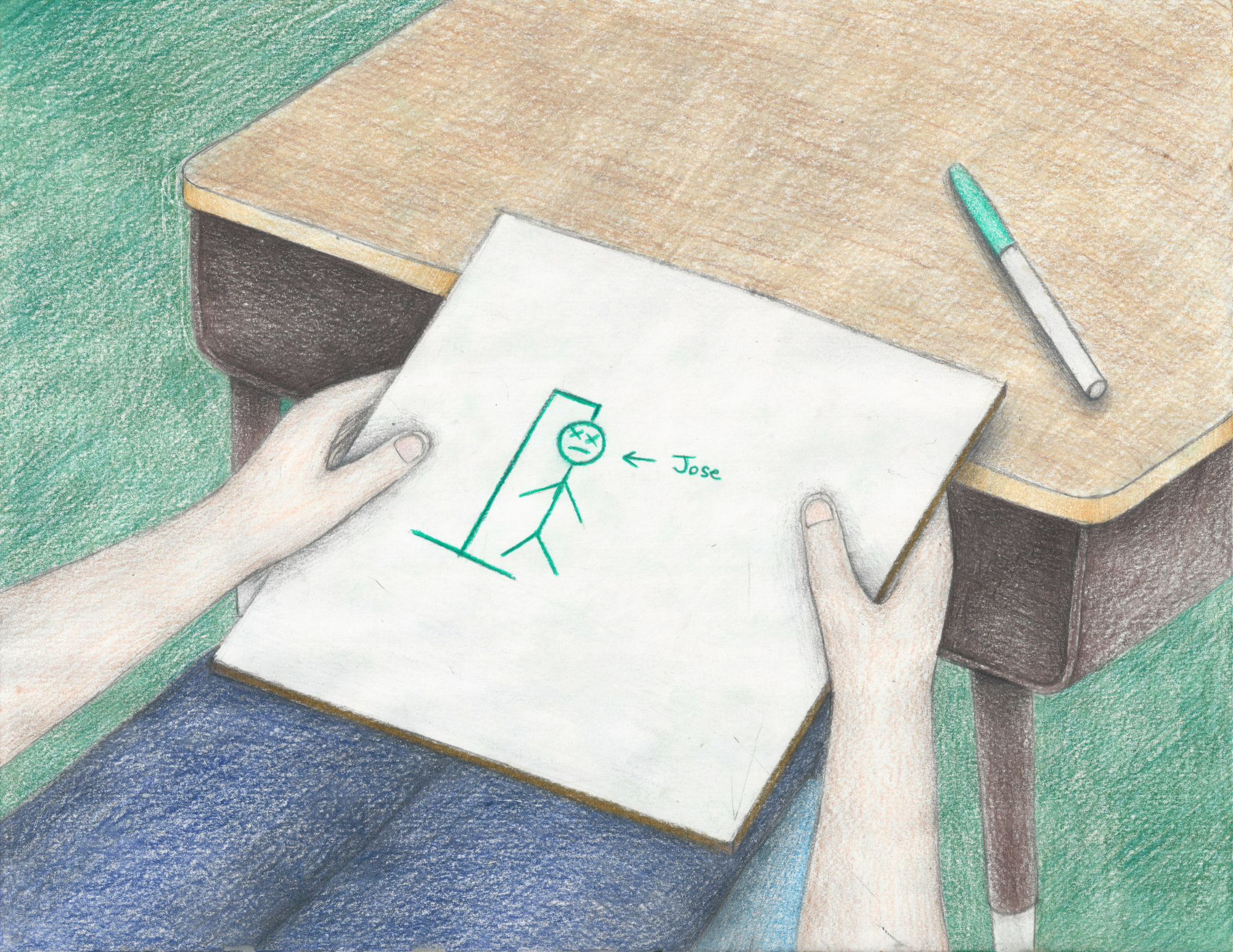Andrea Crespo
Share:
Andrea Crespo’s ongoing series of drawings centers around the stereotyping of people who have been psychopathologized as potential school shooters. Made with colored pencils on 8.5 x 11–inch printer paper, as if from school supplies, the autobiographical works depict scenes from the artist’s middle school years. He reckons with bullies, as seen in the drawing of the artist facing an apparently judgmental and exclusionary group of students. Many of Crespo’s bullies targeted him due to their discomfort with his “Asperger’s-like symptoms,” a phrase Crespo learned only in his 20s through an email from a psychologist whom he had seen during his early adolescent years. Crespo began to see a psychologist in middle school while facing worsening symptoms of OCD, emotional and sensory disturbances, and paranoia, and after growing frustrated with prescription treatments. It’s possible that he received the diagnosis at the time but did not fully understand its implications and so forgot it. Perhaps, though, the diagnosis was deliberately withheld from him. Debate exists over whether giving the symptoms a name is helpful or hurtful to an adolescent: whether it can enable a sense of empowerment through self-understanding, or, through internalized ableism, prompt shame. When Crespo was given the diagnosis, he looked back on this time through a new lens; thus, we see the artist, for the most part, in the third person. The category of “Asperger’s” is no longer used, having been replaced with “on the autism spectrum,” which adds to the remove.
Crespo felt pressure from bullies who planted ideas of violence in his mind by imposing the shooter stereotype upon him, a view rooted in their fear of his difference. To be clear: he never felt tempted by actual gun violence. However, he did at times resort to empty threats as a means of thwarting bullies, as seen in the hangman drawing. He was aware that performing a fulfillment of their stereotype-based fear was one of few ways to get them to leave him alone. He also grew to feel robotic in response to bullying and agitation, which could have exacerbated the appearance of his “Asperger’s-like symptoms.” The series, thus, shows that one risk of bullying is stereotypes becoming self-fulfilling. The work is, of course, not meant to elicit sympathy for shooters, but instead speaks to one type of discrimination that the mentally ill sometimes face. It is all too common for the press, after school shootings, to focus on the shooter’s mental health, even though studies show that less than one percent of mass shooters have mental illness diagnoses.1 It is one way that stigmas are exacerbated in order to support political agendas, such as anti-gun regulation, while also othering the psychopathologized in ways that disallow them from speaking for themselves. Here, Crespo reflects on how such stereotypes affect the daily life of struggles with mental illness in his own experience.2
This project originally appeared in ART PAPERS “Disability + Visibility,” Winter 2018/2019.
Andrea Crespo is an artist born in 1993 working in New York City.
Emily Watlington is a critic, curator, and 2018-2019 Fulbright scholar based in Berlin, Germany, and Cambridge, Massachusetts.
References
| ↑1 | Liza H. Gold and Robert I. Simon, Gun Violence and Mental Illness (Arlington, Virginia: American Psychiatric Association Publishing, 2016). |
|---|---|
| ↑2 | While some might prefer the term neurodivergent, I have here used the language that Crespo also uses to self-identify. This terminology does not reflect the views of everyone on the autism spectrum. |
